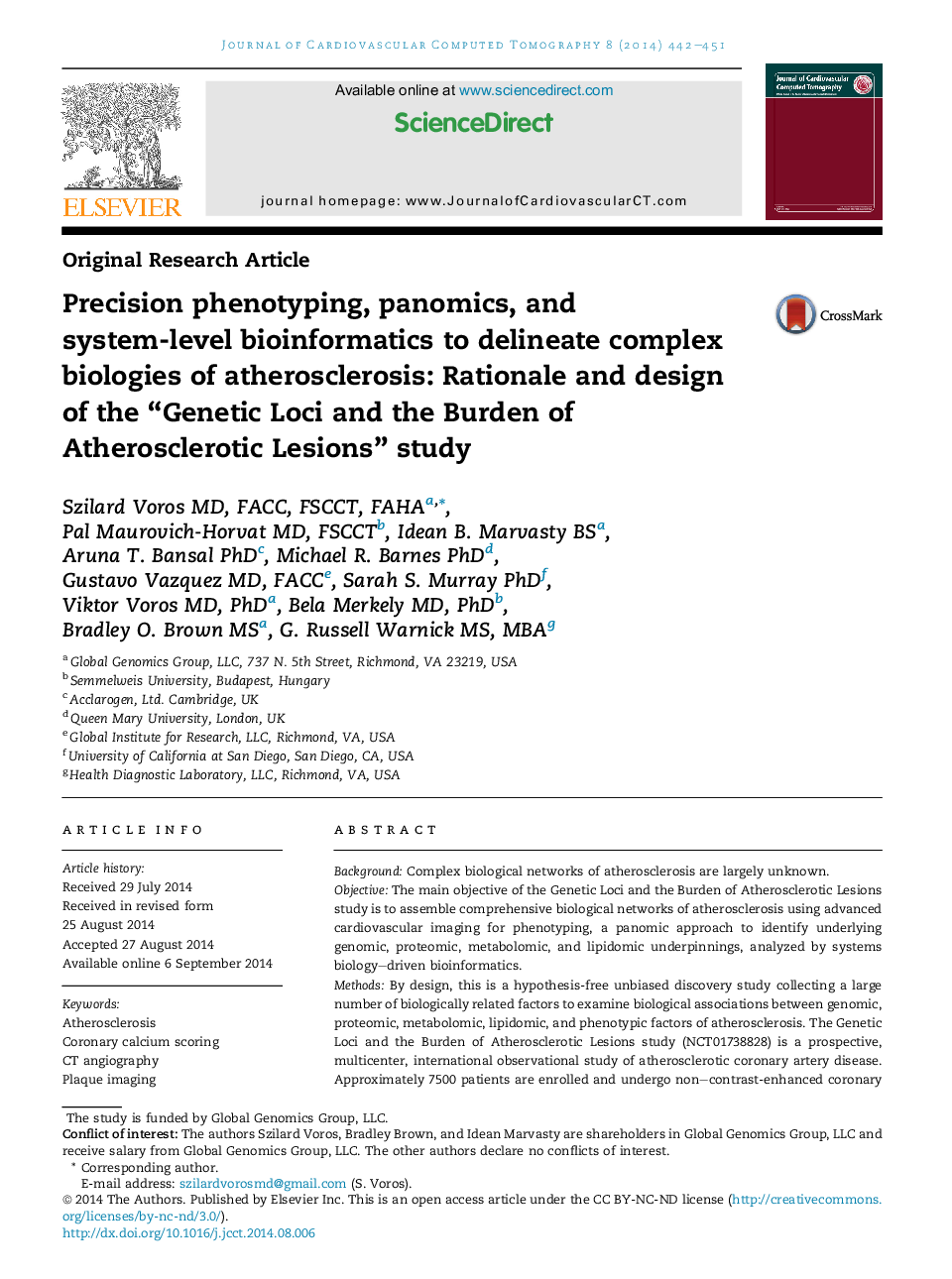| Article ID | Journal | Published Year | Pages | File Type |
|---|---|---|---|---|
| 5985057 | Journal of Cardiovascular Computed Tomography | 2014 | 10 Pages |
BackgroundComplex biological networks of atherosclerosis are largely unknown.ObjectiveThe main objective of the Genetic Loci and the Burden of Atherosclerotic Lesions study is to assemble comprehensive biological networks of atherosclerosis using advanced cardiovascular imaging for phenotyping, a panomic approach to identify underlying genomic, proteomic, metabolomic, and lipidomic underpinnings, analyzed by systems biology-driven bioinformatics.MethodsBy design, this is a hypothesis-free unbiased discovery study collecting a large number of biologically related factors to examine biological associations between genomic, proteomic, metabolomic, lipidomic, and phenotypic factors of atherosclerosis. The Genetic Loci and the Burden of Atherosclerotic Lesions study (NCT01738828) is a prospective, multicenter, international observational study of atherosclerotic coronary artery disease. Approximately 7500 patients are enrolled and undergo non-contrast-enhanced coronary calcium scanning by CT for the detection and quantification of coronary artery calcium, as well as coronary artery CT angiography for the detection and quantification of plaque, stenosis, and overall coronary artery disease burden. In addition, patients undergo whole genome sequencing, DNA methylation, whole blood-based transcriptome sequencing, unbiased proteomics based on mass spectrometry, as well as metabolomics and lipidomics on a mass spectrometry platform. The study is analyzed in 3 subsequent phases, and each phase consists of a discovery cohort and an independent validation cohort. For the primary analysis, the primary phenotype will be the presence of any atherosclerotic plaque, as detected by cardiac CT. Additional phenotypic analyses will include per patient maximal luminal stenosis defined as 50% and 70% diameter stenosis. Single-omic and multi-omic associations will be examined for each phenotype; putative biomarkers will be assessed for association, calibration, discrimination, and reclassification.
